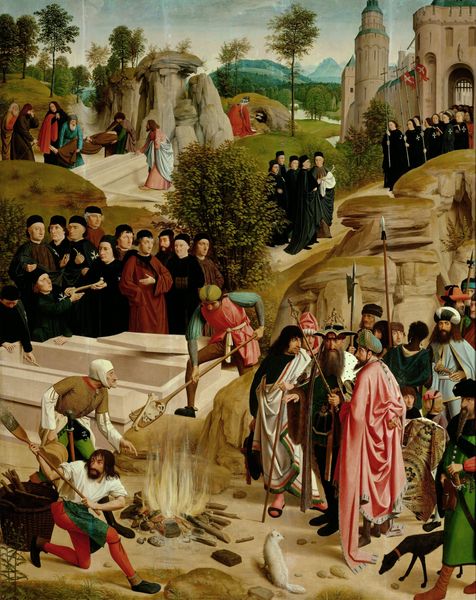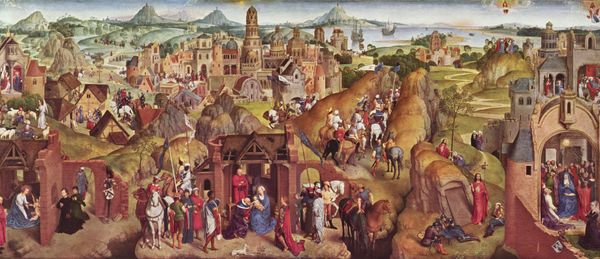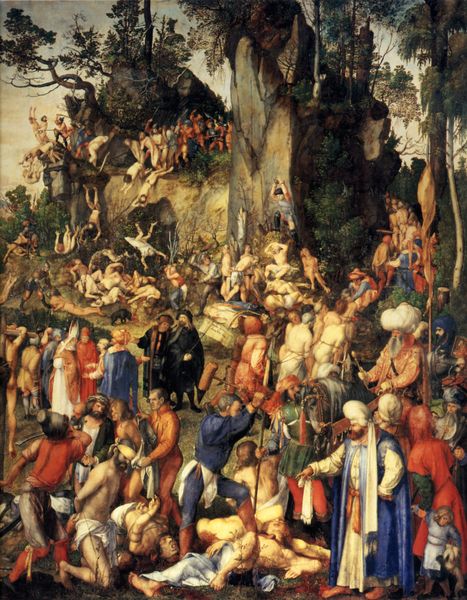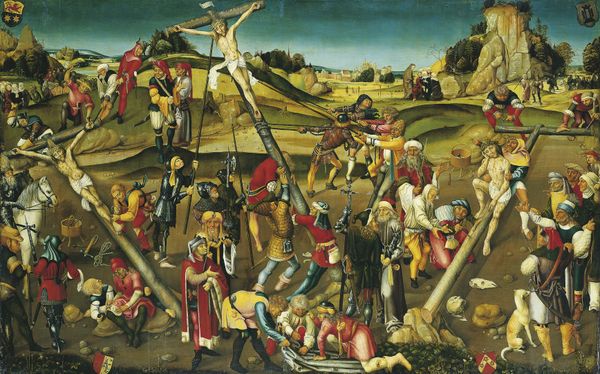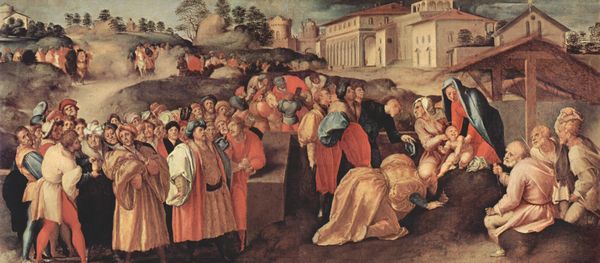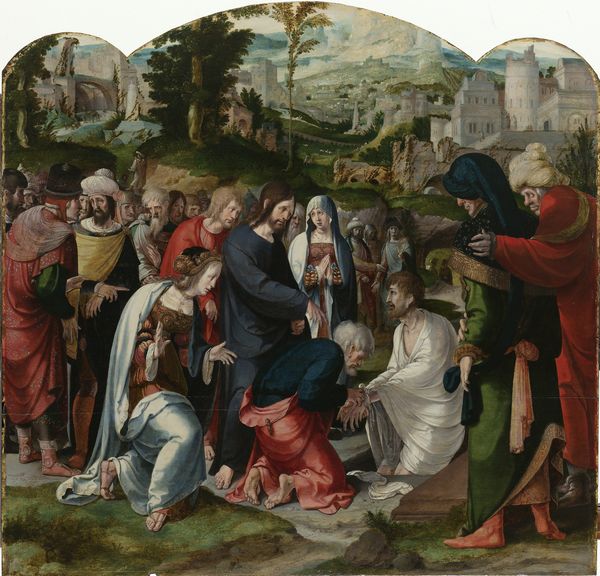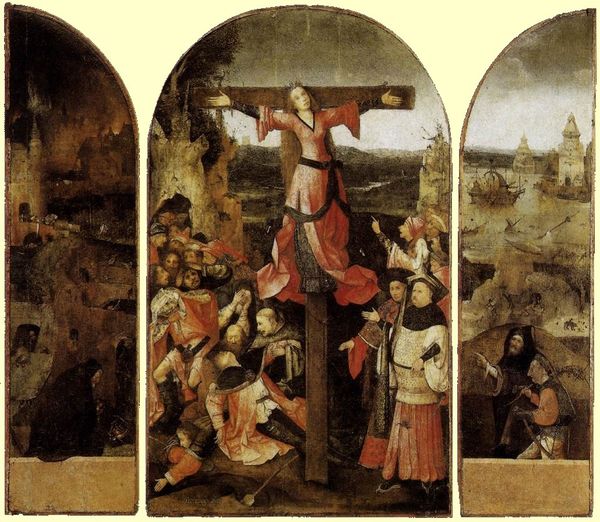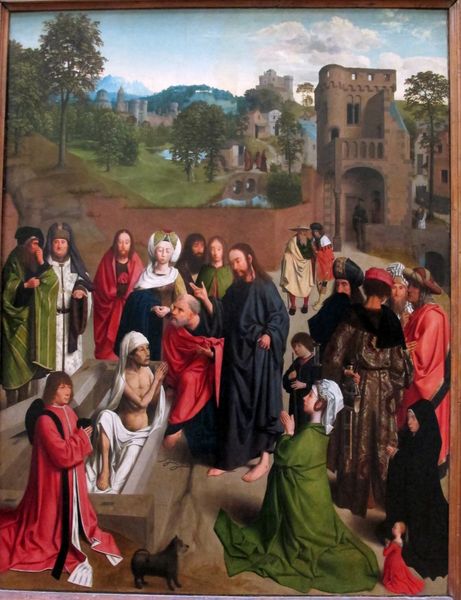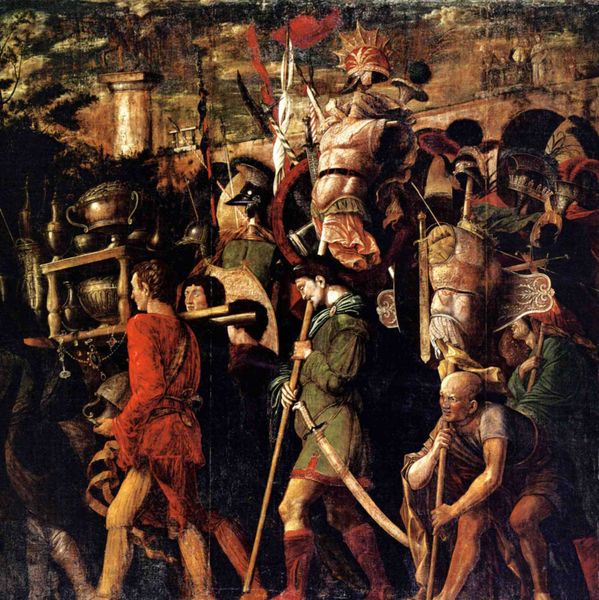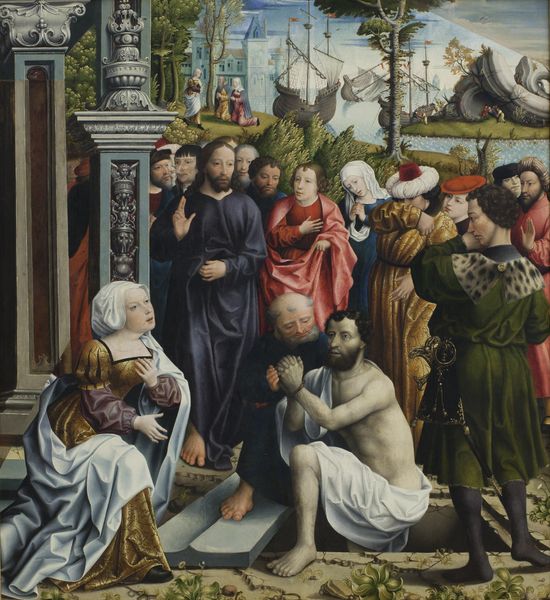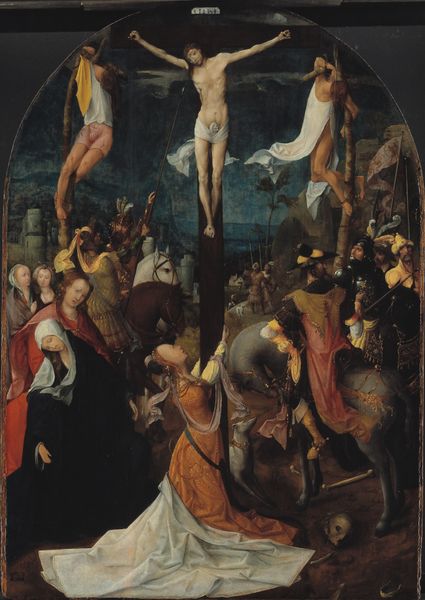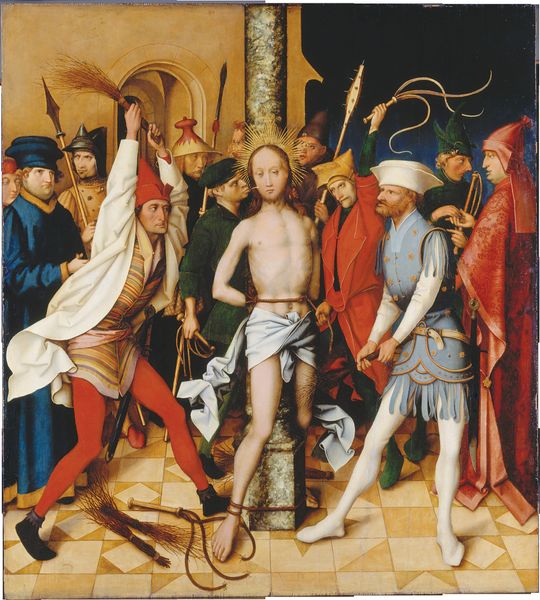
painting, oil-paint, fresco
#
painting
#
oil-paint
#
landscape
#
figuration
#
fresco
#
oil painting
#
history-painting
#
italian-renaissance
Dimensions: 205 x 150 cm
Copyright: Public domain
Editor: Here we have a detail of the "Altar triptych from the Lubeck Cathedral," crafted by Hans Memling around 1491. The dramatic tension in the painting really strikes me. With the figures in turmoil below the crosses. What do you see as the most significant formal aspects of this composition? Curator: Primarily, it's essential to analyze the carefully constructed visual space. Observe how Memling employs vertical lines of the crosses, anchoring the composition and dividing the scenes. Do you note the use of color in relation to those vertical divisions? Editor: I do. The brighter colors seem clustered at the base, almost fighting for space, drawing our eye downwards, perhaps toward that scattering of bones near the bottom of the frame. It feels unbalanced somehow. Curator: Precisely. That tension arises from the disjunction between the linear organization of the crosses and the more chaotic arrangement of figures. Consider the artist's decision to populate the ground plane so densely. What purpose does that serve, visually? Editor: To heighten that sense of claustrophobia and emotional intensity perhaps? All that emotion contained between those stark, vertical crosses… I also notice the shift in focus from detailed foreground figures to the atmospheric perspective used to create a vast background, that extends almost to the sky. How does the interplay between these elements impact the painting’s message? Curator: That contrast generates depth, while that sky pulls away. This layering of form complicates a direct reading, forcing a slower engagement with the formal relationships. We have to remember it’s a triptych: not everything is designed to meet in a single place, within this section alone. Editor: I hadn’t thought of it that way. It is all about those inter-panel relationships after all, how meaning shifts across those separations! Thanks, that was insightful.
Comments
No comments
Be the first to comment and join the conversation on the ultimate creative platform.
